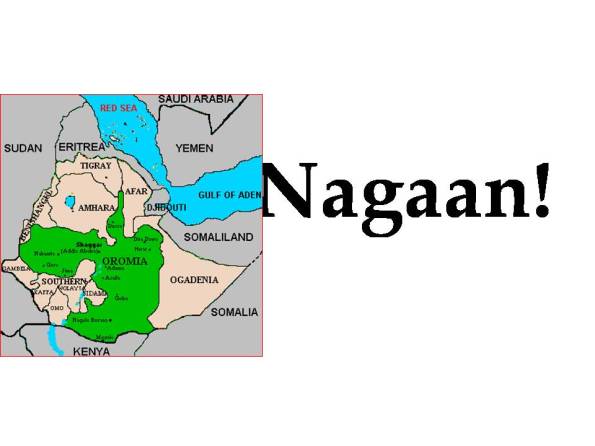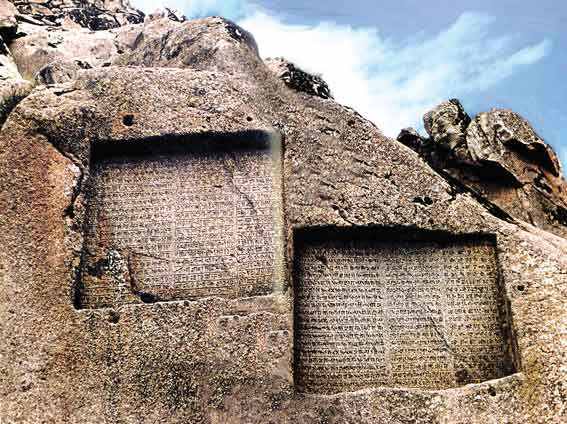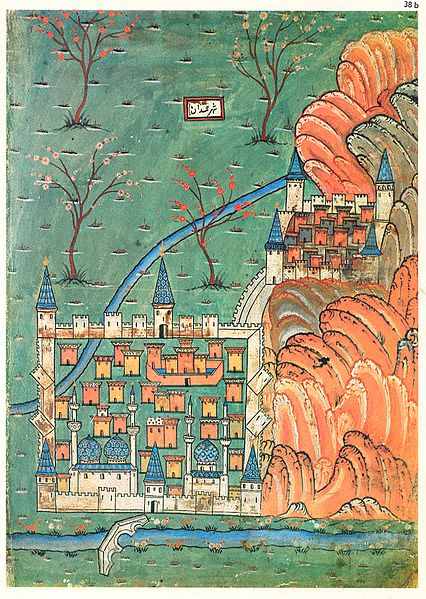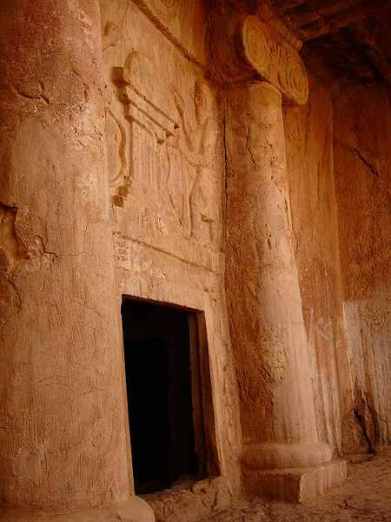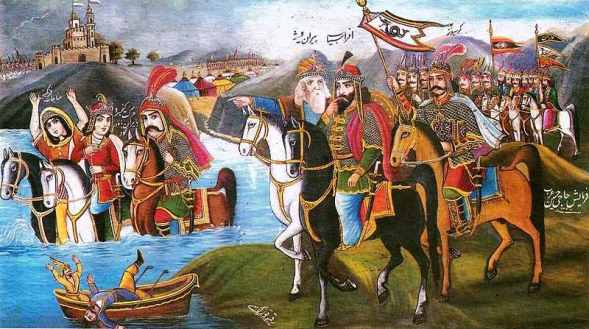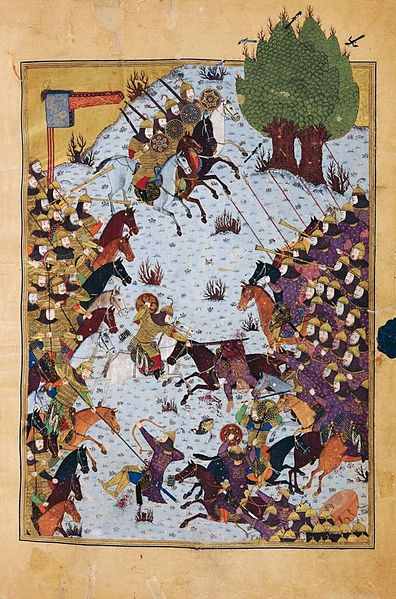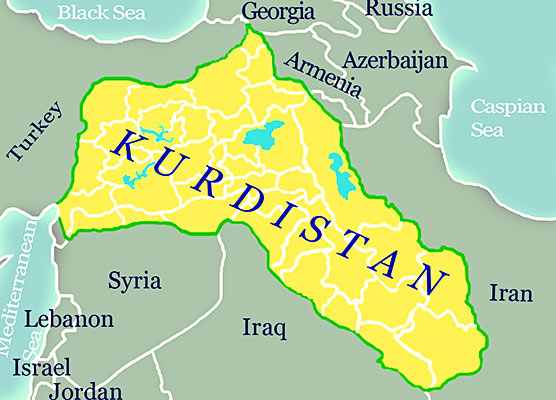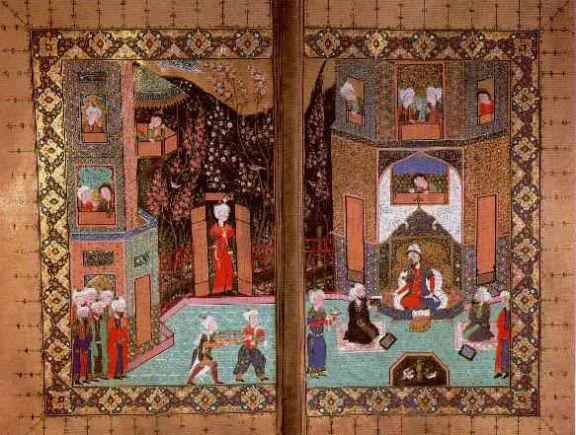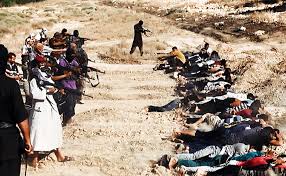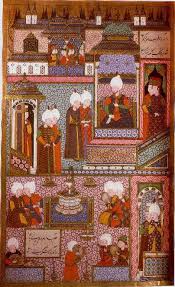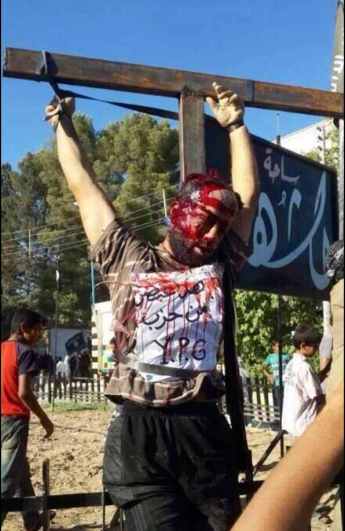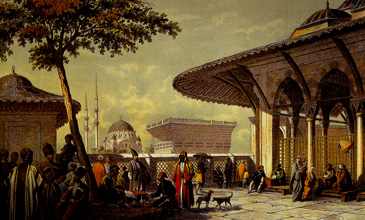The Meroitic Ethiopian Origins of the Modern Oromo Nation
By Prof. Dr. Muhammad Shamsaddin Megalommatis
First published in: http://www.americanchronicle.com/articl … leID=21760
Subsequently published in: Oromo Studies Association, 2005 Conference Proceedings, Washington D.C., 2005, 10p
Online mention: http://oromostudies.org/Proceedings/OSA.Proceeding.2005.pdf
The present text has been slightly edited.
This paper deals, among others, with the development of Meroitic studies, the Meroitic civilization, the destruction of the city of Meroe, the dispersal of the Meroitic people after the collapse of their state, the Christianization of the post Meroitic states in Ethiopia (i.e. Northern Sudan / it is to be reminded that the modern state of Abyssinia is fallaciously, illegally and criminally rebaptized ‘Ethioipia’), the migration of the remnants of the Meroitic people in the direction of the Blue Nile, and their possible relation of ancestry with the modern Cushitic language speaking Oromo nation. It must be stated clearly at the outset that the issue of Meroitic ancestry of the Oromo nation has not yet been considered, much less published in an academic journal or scholarly books. The paper was first presented in an academic conference organized by the Oromo Studies Association. Footnotes have been added in view of the aforementioned publication (see Pdf).
1. The Development of the Meroitic Studies, the History of Kush and Meroe, and the Efforts to Decipher the Meroitic Writing
Interest in what was Ethiopia for the Ancient Greeks and Romans, i.e. the Northern territory of present day Sudan from Khartoum to the Egyptian border *1, led to the gradual development of the modern discipline of the Humanities that long stood in the shadow of Egyptology: the Meroitic Studies.
Considerable advances had been made in academic research and knowledge as the result of the exploratory trips of the Prussian pioneering Egyptologist Richard Lepsius *2 (1842 – 1844) that bestowed upon modern scholarship the voluminous ‘Denkmaeler aus Aegypten und Aethiopien’ (Monuments from Egypt and Ethiopia), and as the direct consequence of the series of excavations undertaken by E. A. Wallis Budge *3 and John Garstang *4 at Meroe (modern Bagrawiyah) in the first years of the twentieth century, by Francis Llewellyn Griffith *5 at Kawa (ancient Gematon, near modern Dongola, 1929 – 1931), by Fritz Hintze *6 at Musawwarat es Sufra, by Jean Leclant *7 at Sulb (Soleb), Sadinga (Sedeinga), and Djebel Barkal (ancient Napata, modern Karima) in the 1950s and the 1960s, by D. Wildung *8 at Naqah, and by Charles Bonnet at Kerma. The pertinent explorations and contributions of scholars like A. J. Arkell *9, P. L. Shinnie *10, and Laszlo Torok *11 that cover a span of 80 years reconstituted a large part of the greatness and splendor of this four millennia long African civilization.
Yet, due to the lack of direct access to original sources and genuine understanding of the ancient history of Sudan, the legendary and historical Ethiopia of the Greeks and Romans, which corresponds to what was ‘Kush’ for the Hebrews (mentioned many times in the Bible) and ultimately ‘Kas’ for the ancient Egyptians *12 (mentioned in thousands of hieroglyphic, hieratic and demotic texts), we face a serious problem of terminology when it comes to Ancient Sudan’s earlier historical periods.
We are confined to such terms as Period (or Group) A (3100 – 2700 BCE), *13 Period B *14 (2700 – 2300 BCE that starts with Pharaoh Snefru’s expedition, *15 which marks indeed the beginning of the time-honored and multi-faceted relationship between Kemet-Egypt and Kush), and Period C *16 (2300 – 2100 BCE), for one millennium of Ancient Sudanese (Ethiopian or Kushitic) History. For the said period, thanks to Ancient Egyptian texts, we have a plethora of ethnic names and state names referring to populations living in North Sudan’s territory (notably Wawat, Irtet, Setjiu,Yam, Zetjau, and Medjay *17); but we fail to correctly establish to whom these names exactly refer as ethno-linguistic groups (Kushitic? Nilo-Saharan? Western Hamitic?).
Subsequent periods of Ancient Sudanese History are also denoted in conventional manner, as this is highlighted by the term Period of Kerma *18 (2100 – 1500 BCE); this period is named after the modern city and archeological site, 500 km in the south of the present Sudanese – Egyptian border.
What we know for sure is that, when the first Pharaohs of the New Empire invaded and colonized the entire area down to Kurgus *19 (more than 1000 km alongside the Nile, south of the present Sudanese – Egyptian border), they established two top Egyptian administrative positions, namely “Viceroy of Wawat” and “Viceroy of Kush/Kas”. Wawat is the area between Aswan and Abu Simbel or properly speaking, the area between the first and the second cataracts, whereas Kas is all the land that lies beyond. With the collapse of the Kerma culture, comes to end a first high-level culture and powerful state in the area of Kush.
We employ the term ‘Kushitic Period’ *20 to refer to the subsequent periods:
a) the Egyptian annexation (1500 – 950 BCE), which involved a permanent effort to egyptianize Kush that triggered in turn ceaseless Kushitic revolutions against the Pharaohs,
b) the Kushitic independence (950 – 800 BCE), when a separate state was formed around Napata *21, present day Karima, 750 km south of the Sudanese – Egyptian border,
c) the Kushitic expansion and involvement in Egypt (800 – 670 BCE, which corresponds mostly to the XXVth – ‘Ethiopian’ (meaning literally Sudanese) according to Manetho *22 – dynasty of Egypt, when the Theban clergy of Amun made an alliance with the Kushitic ‘Qore’, i.e. the Kings of Napata, who ruled Kush and Upper Egypt based on their two capitals, Napata and Thebes *23, (the alliance was directed against the pact that the Heliopolitan clergy of Ra had made with the Libyan princes who thus strengthened the separate state of Lower Egypt),
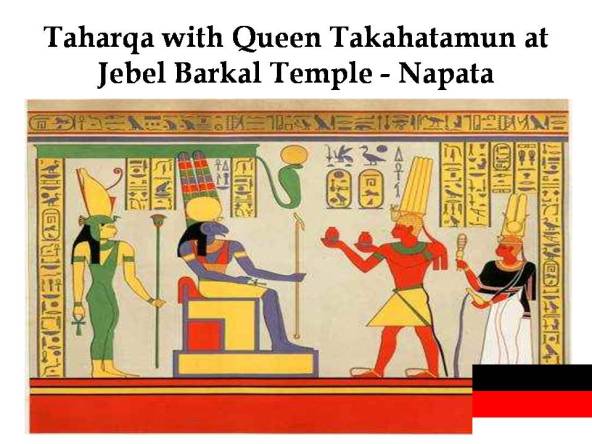
d) the Kushitic expulsion from Egypt, following the three successive invasions of Egypt by Emperors Assarhaddon *24 (in 671 BCE) and Assurbanipal *25 (in 669 BCE and 666 BCE) of Assyria, who made an alliance with the Heliopolitan *26 priesthood and the Libyan princes against the Theban clergy and the Kushitic kings, and
e) the subsequent Kushitic state’s decline – period during which took place the successive invasions led by Psamtik/Psammetichus II of Egypt *27 (in 591 BCE) and by the Achaemenid *28 Persian Shah Kambudjiyah / Cambyses *29 (in 525 BCE).
The entire Kushitic period is considered as terminated with the completion of the transfer of the capital city at a much safer (and more distant from Egypt) location far in the south, namely at Meroe, in the area of present day Bagrawiyah beyond the point whereby Atbarah river unites with the Greater Nile. This event occurred at the end of the reign of Qore (King) Nastasen *30 between 335 and 315 BCE.
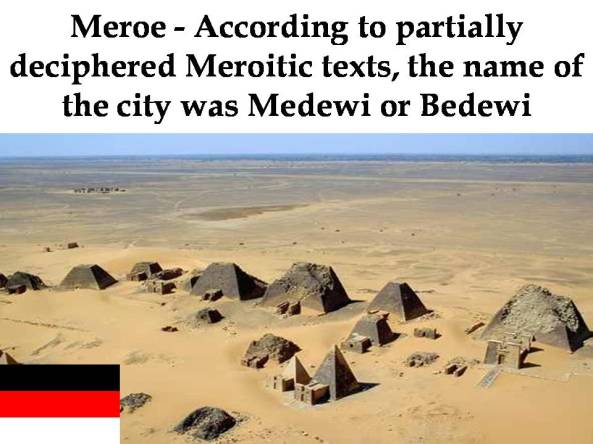
We call ‘Meroitic’ the entire period that covers almost 700 years beginning around 260 BCE with the reign of the successors of Nastasen, notably Arkamaniqo / Ergamenes *31 (the most illustrious among the earliest ones and the first to be buried at Meroe / Bagrawiyah), and ending with the end of Meroe and the destruction of the Meroitic royal cities by the Axumite Abyssinian Negus Ezana *32 (ca. 370 CE). It is easily understood that the ‘Kushitic’ period antedates ‘Meroitic’ period, but both appellations are quite conventional.
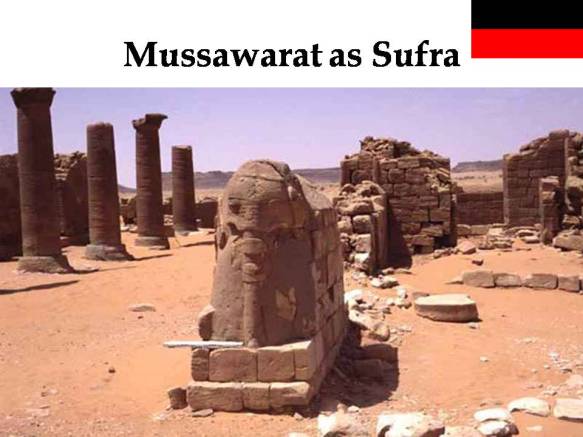
The ancient people of Kush (or Ethiopia) entered into a period of cultural, intellectual, and scriptorial radiation and authenticity relatively late, around the third century BCE, which means that the development took place when Meroe replaced Napata as capital of the Kushites / Meroites. Before that moment, the ancient people of Kush (or Ethiopia) used Egyptian hieroglyphic writing for all their scriptorial purposes, be they administrative, economic, religious and/or monumental – royal. The introduction of the Meroitic alphabetic hieroglyphic writing spearheaded the development of a Meroitic cursive alphabetic scripture that was used for less magnificent purposes than palatial and sacred relief inscriptions. The first person to publish copies of Meroitic inscriptions (then unidentified) was the French architect Gau *33, who visited Northern Sudan as early as 1819. Quite unfortunately, almost two centuries after the discovery of the first Meroitic inscriptions, we are left in mysteries with regard to the greatest part of the contents of the epigraphic evidence collected in both scriptural systems.
The earliest dated Meroitic hieroglyphic inscriptions belong to the reign of the ruling queen Shanakdakheto *34 (about 177-155 BCE), but archaeologists believe that this scripture represents the later phase of a language spoken by Kushites / Meroites at least as far back as 750 BCE and possibly many centuries or even millennia before that (hinting therefore at a Kushitic / Ethiopian continuity from the earliest Kerma days at the end of the 3rd millennium BCE). The earliest examples of Meroitic cursive inscriptions, recently found by Charles Bonnet in Dukki Gel (REM 1377-78) *35, can also be dated in the early 2nd century BCE. The latest text is still probably the famous inscription from Kalabsha (Ancient Egyptian Talmis) mentioning King Kharamadoye (REM 0094) *36, which dates back to the beginning of the fifth century CE, although some funeral texts from Ballana *37 could be contemporary or even posterior.
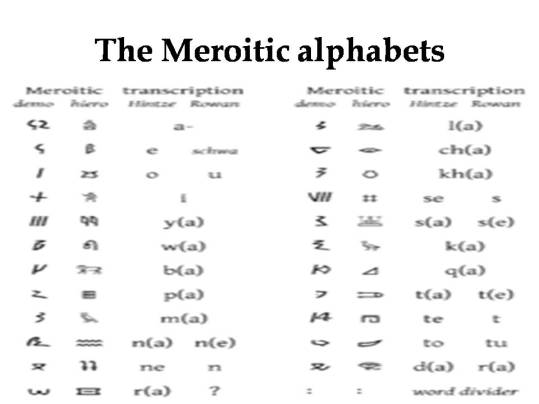
Despite the fact that F. L. Griffith identified the twenty three (23) Meroitic alphabetic writing signs already in 1909, not much progress has been made towards the ultimate decipherment of the Meroitic *38. Scarcity of epigraphic evidence plays a certain role in this regard, since as late as the year 2000 we were not able to accumulate more than 1278 texts in all types of Meroitic writing. If we now add to this fact the lack of lengthy texts, the lack of any bilingual text (not necessarily Egyptian /Meroitic, it could also be Ancient Greek / Meroitic, if we take into consideration that Arkamaniqo / Ergamenes *39 was personally well versed in Greek), and a certain lack of academic vision, we understand why the state of our knowledge about the history of the Ancient Meroites is still so limited.
Linguistics and parallels from other languages have been repeatedly set in motion in order to help the academic research. Griffith and Haycock *40 tried to read Meroitic, through use of (modern) Nubian – quite unsuccessfully. K.H. Priese *41 tried to read the Meroitic texts, using Eastern Sudanese (Beja *42 or Hadendawa *43) languages – also unsuccessfully. On the other hand, F. Hintze *44, attempted to compare Meroitic with the Ural-Altaic group (Turko-Mongolian languages) to no avail. More recently, Siegbert Hummel *45, compared the “known” Meroitic words to words attested in languages of the Altaic family which he believed was a substrate language of Meroitic; as this hypothesis is totally wrong, no result came out of this effort. At times, scholars (like Clyde Winters *46) were driven to farfetched interpretations, attempting to equate Meroitic with Tokharian, after assuming a possible relationship between the names Kush and Kushan *47, the latter being the appellation of a sizeable Eastern Iranian state of the late Arsacid *48 (250 BCE – 224 CE) and early Sassanid *49 (224 – 651 CE) times. However, one has to conclude that the bulk of the researchers working on the Meroitic language never believed that the language of the Ancient Sudanese (Ethiopians) could ever be a member of the so-called Afro-Asiatic group of languages (the term itself being very wrong and quite fraudulent).
So far, the only Meroitic words for which a solid translation had been given by Griffith and his successors are the following: man, woman, meat, bread, water, give, big, abundant, good, sister, brother, wife, mother, child, begotten, born, feet. The eventual equivalence between Egyptian and Meroitic texts was a strong motivation for any interpretational approach, recent or not. More recent, but still dubious, suggestions are the following: arohe- ‘protect’, hr- ‘eat’, pwrite ‘life’, yer ‘milk’, ar ‘boy’, are- or dm- ‘take, receive’, dime ‘cow’, hlbi ‘bull’, ns(e) ‘sacrifice’, sdk ‘journey’, tke- ‘love, revere’, we ‘dog’. It is clear that vocalization remains a real problem *50.
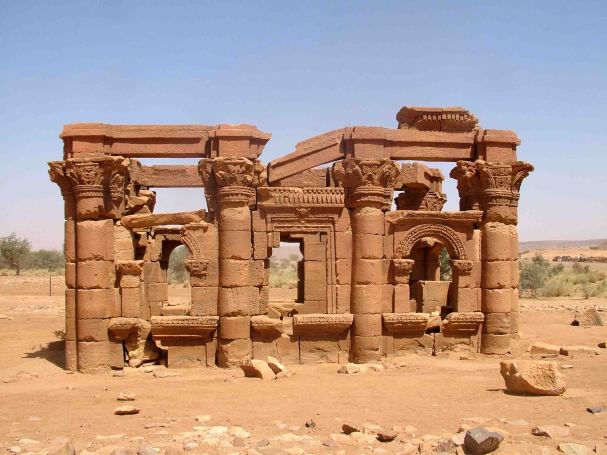
Through the aforementioned we realize why collective works, like Fontes Historiae Nubiorum. Textual Sources for the History of the Middle Nile Region (vols. I – IV, edited by T. Eide, T. Haegg, R.H. Pierce, and L. Torok, University of Bergen, Bergen 1994, 1996. 1998 and 2000), are still seminal for our – unfortunately indirect, as based on Ancient Egyptian, Greek, Latin and Coptic texts – knowledge of Ancient Meroe.
2. The End of Meroe
Amidst numerous unclear points of the Kushitic / Meroitic (Ancient Sudanese / Ethiopian) History, the end of Meroe and the consequences under which it happened still remain a most controversial point among scholars. Quite indicatively, we may mention here the main efforts of historical reconstitution.
A. Arkell, Sayce and others asserted that Meroe was captured and destroyed, following one military expedition led by Ezana of Axum.
B. Reisner insisted that, after Ezana’s invasion and victory, Meroe remained a state under another dynasty tributary to Axum.
C. Monneret de Villard and Hintze affirmed that Meroe was totally destroyed already before Ezana’s invasion, due to another, earlier Axumite Abyssinian raid.
D. Torok, Shinnie, Kirwan, Haegg and others concluded that Meroe was defeated by a predecessor of Ezana, and continued existing as a vassal state.
E. Bechhaus-Gerst specified that Meroe was invaded prior to Ezana’s raid, and that the Axumite invasion did not reach further lands north of Meroe *51.
With two fragmentary inscriptions from Meroe, one from Axum, two graffitos from Kawa and Meroe, and one coin being all the evidence we have so far, we have little to properly reconstruct the details that led to the collapse of Meroe. One relevant source, the Inscription of Ezana (DAE 11, the ‘monotheistic’ inscription in vocalized Ge’ez), *52 remains a somewhat controversial historical source to be useful in this regard. The legendary Monumentum Adulitanum *53, lost but copied in a confused way by Cosmas Indicopleustes *54, may not shed light at all on this event. One point is sure, however: there was never a generalized massacre of the Meroitic inhabitants of the lands conquered by Ezana. The aforementioned DAE 11 inscription mentions just 758 Meroites killed by the Axumite forces.
What is even more difficult to comprehend is the reason behind the scarcity of population attested on Meroitic lands in the aftermath of Ezana’s raid. The post-Meroitic and pre-Christian, transitional, phase of Sudan’s history is called X-Group *55 or Period, and also Ballana Period; this atypical appellation underscores the lack to historical insight that happens once more in the History of Ancient Sudan (Ethiopia).
During the Ballana Period (X-Group) and contrarily to what happened for many centuries of Meroitic History, when the Meroitic South (the area between today’s Shendi *56 and Atbarah *57 in modern Sudan with the entire hinterland of Butana that was called Insula Meroe / Nesos Meroe, i.e. Island Meroe in the Antiquity) was overpopulated comparatively with the Meroitic North {the area between Napata / Karima and Abu Simbel *58 or further in the North, Aswan *59 (the area between Aswan and Abu Simbel was then called Triakontaschoinos *60 and politically, it was divided between Meroe and the Roman Empire)}, the previously under-populated area (i.e. the Meroitic North) gives us the impression of a more densely peopled region, if compared to the previous center of Meroitic power and population density (the Meroitic South). The new situation contradicts therefore the earlier descriptions and narrations by Dio Cassius *61 and Strabo *62.
Furthermore, the name ‘Ballana period’ is quite indicative in this regard, because Ballana is located on Egyptian soil, whereas not far, south of the present Sudanese – Egyptian border, lies Karanog with its famous tumuli that bear evidence of Nubian (not Kushitic / Meroitic) upper hand in terms of social anthropology. The southernmost counterpart of Karanog culture can be found in Tangassi (nearby Karima, which represented the ‘North’ for what was the center of the earlier Meroitic power). This means that for the period immediately after the destruction of Meroe (ca. 370 CE), the Meroitic North offers the archaeological evidence that serves to name the entire period (Ballana Period), whereas the Meroitic South seems to have been totally uninhabited.
In addition, in terms of culture, X-Group heralds a total break with the Meroitic tradition, with the Nubians and the Blemmyes/Beja outnumbering the Meroitic remnants and imposing a completely different cultural and socio-anthropological milieu out of which would later emanate the first and single Nubian state in the World History: Nobatia.
Much confusion characterized modern scholars when referring to Kush or Meroe by using the modern term ‘Nubia’. By now, it is clear that the Nubians lived since times immemorial in both Egypt and the Sudan, being part of the history of these two lands. However, the Nubians are a Nilo-Saharan ethno-linguistic group different from the Hamitic Kushites / Meroites. At the times of X-Group and during the long centuries of Christian Sudan, we have the opportunity to attest the differences and the divergence between the Nubians and the Meroitic remnants.
Following the collapse of the Meroitic state, the epicenter of the Nubian land, i.e. the area between the first (Aswan) and the third (Kerma) cataracts, rose to independence and prominence first, with capital at Faras, nearby the present day Sudanese – Egyptian border, around 450 CE. Nobatia institutionalized Coptic as religious (Christian) and administrative language, and Nubian language remained an oral only means of communication. The Nobatian control in the areas south of the third cataract was vague, nominal and precarious. Nobatia was linked with the Coptic (‘Monophysitic’) Patriarchate of Alexandria.
This means something very important for the Christian History of Sudan (Ethiopia); Christianization did not come from Abyssinia, and there was no cultural or religious impact exercised by Axum on (Ethiopia) Sudan. As in pre-Christian times, Ethiopia remained the absolute opposite of Abyssinia. In the true, historical Ethiopia (Sudan), Christianization came from the North (Egypt). Abyssinia (which cannot be called ‘Ethiopia’ and which has absolutely no right to the name of Ethiopia) was a marginal and isolated, tiny and mountainous state that basically controlled the land between Axum and Adulis (on the Red Sea shore). And King Ezana’s invasion and destruction of Meroe was an occasional and inconsequential event that did not bring forth any immediate major result.
The Meroitic remnants underscored their difference from the Nubians / Nobatians, and the depopulated central part of the defunct state of Meroe rose to independence only later, in the first decades of the sixth century. Its name, Makuria, is in this regard a linguistic reminiscence of the name ‘Meroe’, but we cannot know its real origin and meaning. The remnant of the Meroitic populations inhabited the northern circumference of Makuria more densely, and the gravitation center revolved around Old Dongola (580 km south of Wadi Halfa), capital of this Christian Orthodox state that extended from Kerma to Shendi (the area of the sixth cataract), so for more than 1000 km alongside the Nile. But beyond the area of Karima (750 km in the south of Wadi Halfa) and the nearby famous Makurian monastery at Al Ghazali we have very scarce evidence of Christian antiquities. The old African metropolis of Meroe remained at the periphery of both, the Kushitic Ethiopian states of Makuria and Alodia and the Semitic Abyssinian state of Axum.
Makurians highlighted their ideological – religious divergence from the Nubians, by adopting Greek, not Coptic, as religious language. They even introduced a new scripture for their Makurian language that seems to have been a later phase of Meroitic. Makurian was written in alphabetic Greek signs. Risen at a time of Christological disputes and theological conflicts that brought about a forceful polarization between the Greek Orthodox and the Coptic ‘Monophysitic’ Patriarchates of Alexandria, the state and the Christian church of Makuria sided with the Greek Patriarchate of Alexandria, in striking opposition to the Nobatian state and church that allied themselves with the Coptic Patriarchate of Alexandria.
Further in the South, Alodia has long been called by modern scholars as the ‘third Christian state’ of Sudan, but recent discoveries in Soba, its capital (15 km at the east of Khartoum), suggest that Alodia rose first to independence (around 500 CE) and later adhered to Christianity (around 580 – 600 CE), following evangelization efforts deployed by missionary Nobatian priests (possibly in a sort of anti-Makurian religious diplomacy). In general, we know little about Alodia (or Aluwah or Alwa), and we actually don’t know whether they used a particular Alodian writing system.
The later phases of the History of Christian Ethiopia (Sudan) encompass the Nobatian – Makkurian merge (around 1000 CE), which was necessary for the two Christian states to defend themselves against the Islamic pressure coming manly from the North (Egypt), the islamization of Makkuria in 1317, and finally, the late collapse of Christian Alodia in 1505.
The question remains unanswered until today:
– What happened to the bulk of the Meroitic population, i.e. the inhabitants of the Insula Meroe, the present day Butana? What occurred to the Meroites living between the fourth and the sixth cataracts after the presumably brief raid of Ezana of Axum, and the subsequent destruction of Meroe, Mussawarat es Sufra, Naqah, Wad ben Naqah, Basa and all the other important cities of the Meroitic heartland?
3. Reconstruction of the Post-Meroitic History of the Kushitic Oromo Nation
Certainly, the motives of Ezana’s raid have not yet been properly studied and assessed by modern scholarship. The reasons for the raid may vary from a simple nationalistic usurpation of the name of ‘Ethiopia’ (Kush), which would give a certain Christian eschatological legitimacy to the Axumite Abyssinian kingdom, to the needs of international politics (at the end of 4th c. CE) and the eventuality of an Iranian – Yemenite (Himyaritic) – Meroitic alliance at the times of Shapur II (310 – 379), aimed at outweighing the Eastern Roman – Abyssinian bond.
Yet, this Iranian – Sudanese political alliance may have been only the later phase of a time-honored Iranian infiltration that could have taken the form of an (easily assessable by both civilizations and nations, the Meroites and the Iranians) heliocentric theology and imperial ideology. No less than 300-350 years before Ezana’s raid and destruction of Meroe, the famous Jebel Qeili reliefs of Shorakaror mark an impressive penetration of Mithraic artistic and religious concepts and forms.
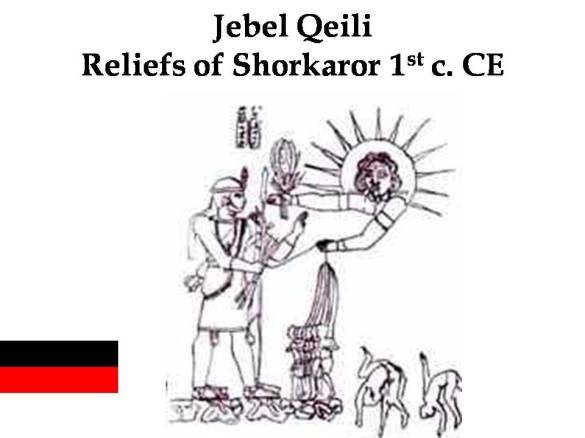
Whatever the reasons of Ezana’s raid may have been, we can be quite sure, when it comes to the destruction of Meroe, about two determinant points that impose a fresh approach and interpretation of the historical development:
a) the absence of any large-scale massacre is evident, and
b) the impressive scarcity of population in the old, central Meroitic provinces is a fact for the period that follows Ezana’s raid and the destruction of Meroe.
The only plausible explanation is that the scarcity of population in the Meroitic mainland after Meroe’s destruction must be due to a large scale migration to safer areas far from the reach of the king of Axum.
The only explanation to match the historical facts and the archeological evidence is that, following Ezana’s raid, the Meroites in their outright majority (at least for the inhabitants of Meroe’s southern provinces) fled and migrated to areas where they would stay independent from the Semitic Abyssinian kingdom of Christian Axum. This explanation hinges on the best utilization and interpretation of the already existing historical – archaeological data.
From archeological evidence, it becomes clear that during X-Group phase and throughout the Makurian period (so for many long centuries) the former heartland of Meroe remained mostly uninhabited. The end of Meroe is definitely very abrupt, and this makes obvious that Meroe’s driving force had gone elsewhere. The correct question would then be ‘where to’?
There is no evidence of Meroites sailing the Nile downwards to the area of the 4th (Karima) and the 3rd (Kerma) cataracts, which was earlier the northern circumference of Meroe and remained totally untouched by Ezana. There is no textual evidence in Greek, Latin and/or Coptic to testify to such a migratory movement toward the North. Christian Roman Egypt would certainly be an incredible direction, but if this had been the case, the migration would have been recorded in some texts and monuments due to its importance. To the above, we have to add the impossibility of marching to the heartland of Abyssinia, because this must have been for the migrating Meroites the only direction to avoid, and again if it had occurred, it would have been mentioned in some historical sources, Ge’ez, Coptic, Syriac, Greek or Latin.
Having therefore excluded all the migration alternatives as per above, we can examine the remaining possibilities. The migrating Meroites could therefore have a) gone either to the vast areas of the Eastern and the Western deserts , b) entered the African jungle or c) ultimately searched for a possibly free land that, being arable and good for pasture, would keep them far from the sphere of the Christian Axumites.
It would be very erroneous and highly unlikely to expect settled people to move to the desert. Such an eventuality would be a unique oxymoron in the History of the Mankind. Nomadic peoples move from the steppes, the savannas and the deserts to other parts of the steppes, the savannas and the deserts or preferably to fertile lands and settle there, at times crossing really long distances. However, settled people, if under pressure, move to other fertile lands that offer them the possibility of cultivation and pasture. When dispersed by the invading Sea Peoples, the Hittites moved from Anatolia to Northwestern Mesopotamia, crossing long distances; they did not cross shorter distance to settle in the small part of Central Anatolia that happened to be desert. The few scholars, who may think that Meroitic continuity can be found among the present day Beja and Hadendawa, are oblivious to the aforementioned reality that was never contravened throughout World History. In addition, the Blemmyes had never been friendly to the Meroites. Every now and then, they had attacked parts of the Nile valley and the Meroites had had to repulse them thence. It would rather be inconceivable for the Meroitic population, after seeing Meroe sacked by Ezana, to move to a land where life would be far more difficult and, in addition, enemies would wait them!
At this point, we should briefly examine Meroe’s surrounding environment, how it is today, and how it was before 1650 years, at the times of king Ezana’s raid. Modern technologies help historians and archeologists better reconstruct the ancient world; paleo-botanists, geologists, geo-chemists, paleo-entomologists, and other specialized natural scientists are of great help in this regard. It is essential to stress here that the entire environmental milieu of Sudan was very different during the times of the Late Antiquity that we examine in our approach. Butana may look like a wasteland nowadays, and the Pyramids of Bagrawiyah may be sunk in the sand, whereas Mussawarat es Sufra and Naqah truly demand a real effort in crossing the desert. However, in the first centuries of Christian era, the entire landscape was dramatically different.
During the Meroitic and Christian times, the entire Butana region, delineated by the rivers Atbarah in the northeast, United Nile in the north-northwest, and Blue Nile in southwest, was not a desert, but a very fertile and extensively cultivated land. We have actually found remains of reservoirs, aqueducts, various hydraulic installations, irrigation systems, and canals in Meroe and elsewhere. Not far from Mussawarat es Sufra there must have been an enclosure where captive elephants were trained before being transported to Ptolemais Theron (present day Suakin, 50 km south of Port Sudan) and then further on to Alexandria. Desert was in the vicinity, certainly, but not that close.
We should not imagine that Ezana crossed desert areas, moving from the vicinities of Agordat, Tesseney (both cities being located in Eritrea), and Kessala (in Sudan) to Atbarah and Bagrawiyah, as we would do today. These lands were either forested or cultivated and used as pasturelands. For what the Meroitic Ethiopian state was in the middle – second half of the 4th c. CE, its capital was located quite close to the Abyssinian borders in the mountains beyond the modern Sudanese city of Kessala; the distance between the two capitals, Meroe and Axum, was much smaller than the distance between Meroe and its northern borders with the Christian Eastern Roman Empire.
In fact, the end of the Meroitic state is a historical irony; it was established with the transfer of capital from Napata to Meroe, ca. 750 years earlier, an act which was due to defense reasons and imposed only after the 6th c. BCE attacks that originated from the North (Egypt). By transferring their capital far to the southeast, the Ancient Kushites / Meroites of Ethiopia (Sudan) made it impregnable from the North; but by so doing, they exposed their capital to an attack from the southeast. However, one has to admit that, at the times of the Ethiopian – Kushitic capital transfer to the southeast (5th – 4th c. BCE), the presence of the Yemenite tribe of Habashat in the African coast land of Eritrea was insignificant and Axum did not exist.
Further expanding on the natural environment of the Ancient Meroites, we have to add that it would be highly unlikely for anyone to attempt to cross at that time the lands south of present day Khartoum, alongside the White Nile. In ancient times, impenetrable jungle started immediately in the south of Khartoum, and cities like El Obeid, Kosti, Sinnar, and Jabalayn are today located on deforested soil.
Contrarily to the aforementioned improbabilities (desert, jungle), the southernmost confines of the Meroitic state offered a certain possibility for migration, since pasturelands and arable land could be found alongside the Blue Nile Valley. Reaching that area, they would achieve safety from Axumite Abyssinia due to the greater distance.
Jungle signified death in the Antiquity, and even armies feared to cross forests and be forced to stay overnight there. We therefore have good reason to believe that, following Ezana’s raid, the Meroites, rejecting the perspective of forced christening, moved first southwestwards up to Khartoum. From there, they proceeded southeastwards alongside the Blue Nile in a direction that would keep them always safe and far from the Axumite Abyssinians whose state did not expand at those days as far in the south as Gondar and Tana Lake. Proceeding in this way and crossing successively areas of modern cities like Wad Madani, Sennar, Damazin, and Asosa, and from there on, they expanded in later times over the various parts of Biyya Oromo.
We do not imply that the migration was completed in the span of one lifetime; quite contrarily, we have reasons to believe that the establishment of Alodia (or Alwa) is rather due to the progressive waves of Meroitic migrants who settled first in the area of Khartoum that was out of the southwestern confines of the Meroitic state. Only when Christianization became a matter of concern for the evangelizing Nobatians, and the two Christian Sudanese states of Nobatia and Makuria were already strong, the chances of preserving the pre-Christian Meroitic cultural heritage in the area around Soba (capital of Alodia) became truly poor. Then, perhaps more than 100 years after the first migration, another wave of migration took place with the early Alodian Meroites proceeding as far in the southeast as Damazin and Asosa, areas that remained always beyond the southern border of Alodia (presumably between Khartoum and Wad Madani). Like this, the second migratory Meroitic Alodian) wave may have entered around 600 CE in the area where the Oromos, descendents of the migrated Meroites, still live today.
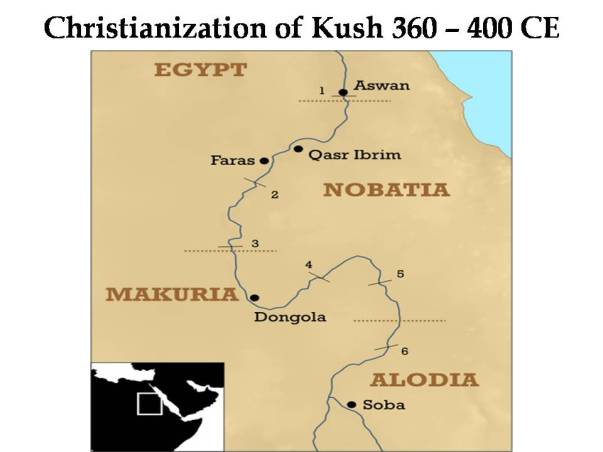
A great number of changes at the cultural – intellectual – behavioral levels are to be expected, when a settled people migrates to faraway lands. The Phoenicians had kings in Tyre, Byblos and their other cities – states in today’s Lebanese and Syrian coast lands, but they introduced a democratic system when they sailed faraway and colonized various parts of the Mediterranean. In their colonies, there were no more kings.
Ezana’s raid ended up with the extermination of some garrison and the Meroitic royal family. The collapse of the Meroitic royalty was an unprecedented event and a greater shock for the Nile valley. The Christian kingdoms of Nobatia, Makuria and Alodia were all ruled by kings whose power was to great extent conditioned and counterbalanced by that of the Christian clergy.
With the Meroitic royal family decimated by Ezana, it is quite possible that high priests of Apedemak and Amani (Amun) took much of the administrative responsibility in their hands, inciting people to migrate and establishing a form of collective and representative authority among the Meroitic – Alodian Elders who thus retained the sacerdotal heritage without a royal – palatial contextualization. They may even have preserved the royal title of Qore within completely different socio-anthropological context and thus made it known to the ancestors of today’s Somalis when the next waves of migration brought the two Kushitic nations close to one another; and the Somalis preserved the term a Boqor within their language until our times.
4. Call for Comparative Meroitic-Oromo Studies
How can this approach, interpretation, and conclusion be corroborated up to the point of becoming a generally accepted historical reconstitution at the academic level? On what axes should one group of researchers work to collect detailed documentation in support of the Meroitic ancestry of the Oromos?
Quite strangely, I would not give priority to the linguistic approach. The continuity of a language can prove many things, and at the same time, it can prove nothing. Today’s Bulgarians are of Uralo-Altaic Turco-Mongolian origin, but, after they settled in Eastern Balkans, they were linguistically slavicized. Most of the Greeks are Albanians, Slavs, and Vlachians, who were greecized linguistically. Most of the Turks in Turkey are Greeks and Anatolians, who were turkicized linguistically.
People can preserve their own language in various degrees and forms. For the case of languages preserved throughout millennia, we notice tremendous changes and differences. Within the context of Ancient Greece, Plato who lived in the 5th – 4th c. BCE could never understand the Achaean Greek dialect which was spoken 800 years earlier at Myceanae and written by means of what we call today ‘Linear B’ (a syllabic, not alphabetic, writing system).
Egyptian hieroglyphics as a Holy Language (the Ancient Egyptian name of this writing system was ‘medu netsher’ which meant ‘the words of the God’) and as a sacerdotal scripture favored a certain archaism and a constant linguistic purification. However, we can be sure that for later Pharaohs, like Taharqa the Kushite (the most illustrious ruler of the Kushitic – Sudanese / Ethiopian dynasty), Psamtik and Nechao (the rulers of the ‘Libyan’ dynasty), and Ptolemy II and Cleopatra VII (of the Macedonian Ptolemaic dynasty), a Pyramid text (that antedated them by 1700 to 2300 years) would almost be incomprehensible.
A. National diachronic continuity is better attested and more markedly noticed in terms of Culture, Religion and Philosophical – Behavioral system. The first circle of comparative research should encompass the world of the Kushitic / Meroitic and Oromo concepts, anything that relates to the Weltanschauung of the two cultural units/groups under study; this should involve a religious-historical comparison between the Ancient Kushitic / Meroitic religion and Waaqeffannaa. A common view of basic themes of life and a common perception of the world, same virtues and values, shared concepts and principles would bring a significant corroboration of the Meroitic ancestry of the Oromos. So, first it is a matter of history of religions, African philosophy, social anthropology, ethnography and culture history.
B. Archeological research can help tremendously too. At this point, one has to state that the critical area for the reconstruction of the suggested Meroitic migration did not attract the interest of Egyptologists, and of archaeologists specializing in Meroitic and Sudanese Antiquities. The area was indeed marginal to both civilizations, and to some extent it is normal that it did not attract scholars who could easily unearth other monumental sites elsewhere and have more spectacular results. The Blue Nile valley in Sudan and Abyssinia was never the subject of an archeological survey, and the same concerns the Oromo highlands. Certainly modern archeologists prefer something concrete that would lead them fast to a great discovery, being therefore very different from the pioneering 19th c. archeologists. An archeological surface survey would therefore be necessary in the Blue Nile valley and in the Oromo highlands in the years to come.
C. A linguistic – epigraphic approach may bring forth even more spectacular results. It could eventually end up with a complete decipherment of the Meroitic, and of the Makurian. An effort must be made to read the Meroitic texts, hieroglyphic and cursive, with the help of Oromo language. Meroitic personal names and toponymics must be studied in the light of a potential Oromo interpretation. Comparative linguistics may unveil affinities that will lead to reconsideration of the work done so far in the Meroitic decipherment.
D. Last but not least, another dimension would be added to the project with the initiation of comparative anthropological studies. Data extracted from findings in the Meroitic cemeteries must be compared with data provided by the anthropological study of present day Oromos. The research must encompass pictorial documentation from the various Meroitic temples’ bas-reliefs.
To all these I would add a better reassessment of the existing historical sources, but this is not a critical dimension of this research project.
I believe my call for Comparative Meroitic – Oromo Studies reached the correct audience that can truly evaluate the significance of the ultimate corroboration of the Meroitic Ancestry of the Oromos, as well as the magnificent consequences that such a corroboration would have in view of
a) the forthcoming Kushitic Palingenesia – or Renaissance if you want – across Africa,
b) the establishment of a Post -Colonial African Historiography, and – last but not least –
c) the Liberation of Oromia and the Representation of the Ancient Kushitic Nation in the United Nations.
Notes
1. To those having the slightest doubt, trying for purely political reasons and evil speculation to include territories of the modern state of Abyssinia into what the Ancient Greeks and Romans called ‘Aethiopia’, the academically authoritative entry Aethiopia in Pauly-Wissowa, Realenzyklopadie der klassischen Altertumwissenschaft consists in the best and irrevocable answer.
2. http://www.mnsu.edu/emuseum/information … karl.html; http://de.wikipedia.org/wiki/Karl_Richard_Lepsius; parts of the Denkmaeler are already available online: http://edoc3.bibliothek.uni-halle.de/bo … start.html. Also: http://encyclopedia.jrank.org/LEO_LOB/L … 1884_.html. The fact that the farthermost point of ‘Ethiopia’ that he reached was Khartoum is of course quite telling.
3. http://en.wikipedia.org/wiki/E._A._Wallis_Budge; he wrote among the rest a book on his Meroe excavations’ results, The Egyptian Sudan: its History and Monuments (London, 1907).
4. Mythical figure of the British Orientalism, Garstang excavated in England, Turkey, Syria, Palestine, Egypt and the Sudan; Albright, William Foxwell: “John Garstang in Memoriam”, Bulletin of the American Schools of Oriental Research, No. 144. (Dec., 1956), pp. 7-8; Garstang’s major articles on his Meroe excavations are the following: ‘Preliminary Note on an Expedition to Meroe in Ethiopia’, Annals of Archaeology and Anthropology 3 (1911 – a), ‘Second Interim Report on the Excavations at Meroe in Ethiopia, I. Excavations’, Annals of Archaeology and Anthropology 4 (1911 – b), ‘Third Interim Report on the Excavations at Meroe in Ethiopia’, Annals of Archaeology and Anthropology 5 (1912), ‘Forth Interim Report on the Excavations at Meroe in Ethiopia’, Annals of Archaeology and Anthropology 6 (1913), and ‘Fifth Interim Report on the Excavations at Meroe in Ethiopia’, Annals of Archaeology and Anthropology 7 (1914). His major contribution was published in the same year under the title ‘Meroe, the City of Ethiopians’ (Oxford). A leading Meroitologist, Laszlo Torok wrote an entire volume on Garstang’s excavations at Meroe: Meroe City, an Ancient African Capital: John Garstang’s Excavations in the Sudan.
5 Griffith was the epigraphist of Grastand and had already published the epigraphic evidence unearthed at Meroe in the chapter entitled ‘the Inscriptions from Meroe’ in Garstang’s ‘Meroe, the City of Ethiopians’. After many pioneering researches and excavations in various parts of Egypt and Northern Sudan, Faras, Karanog, Napata and Philae to name but a few, Griffith concentrated on Kerma: ‘Excavations at Kawa’, Sudan Notes and Records 14.
6. Basically: http://www.sag-online.de/pdf/mittsag9.5.pdf; among other contributions: Die Inschriften des Loewentempels von Musawwarat es Sufra, Berlin (1962); Vorbericht ueber die Ausgrabungen des Instituts fuer Aegyptologie der Humboldt-Universitaet zu Berlin in Musawwarat es Sufra, 1960-1961 (1962); ‘Musawwarat es Sufra – Preliminary Report on the Excavations of the Institute of Egyptology, Humboldt University, Berlin, 1961-1962 (Third Season)’, Kush 11 (1963); ‘Preliminary Note on the Epigraphic Expedition to Sudanese Nubia, 1962’, Kush 11 (1963); ‘Preliminary note on the Epigraphic Expedition to Sudanese Nubia, 1963’, Kush 13 (1965)
7. As regards my French professor’s publications about his excavations at Sudan: Soleb and Sedeinga in Lexikon der Aegyptologie 5, Wiesbaden 1984 (entries contributed by J. Leclant himself); also J. Leclant, Les reconnaissances archéologiques au Soudan, in: Etudes nubiennes I, 57-60.
8. His recent volume Sudan: Ancient Kingdoms of the Nile, Paris/New York (1997) contains earlier bibliography.
9. Some of his most authoritative publications: ‘A History of the Sudan from the Earliest Times to 1821′, 1961 (2nd Ed.), London; ”The Valley of the Nile’, in: The Dawn of African History, R. Oliver (ed.), London. Arkell is mostly renowned for his monumental ‘The Royal Cemeteries of Kush’ in many volumes.
10. Presentation of his ‘Ancient Nubia’ in: http://www.keganpaul.com/product_info.p … cts_id=33; for a non exhaustive list of Shinnie’s publications: http://www.arkamani.org/bibliography%20 … ia2.htm#S; see also a presentation of a volume on Meroe, edited by Shinnie et alii: http://www.harrassowitz-verlag.de/mcgi/ … 1163879905{haupt_harrassowitz= http://www.harrassowitz-verlag.de/acgi/a.cgi?alayout=489&ausgabe=detail&aref=353.
11. Many of his publications are listed here: http://www.arkamani.org/bibliography%20 … ia2.htm#S; also here: http://www.arkamani.org/bibliography%20 … ypt4.htm#T. In the Eighth International Conference for Meroitic Studies, L. Torok spoke about ‘The End of Meroe’; the speech will be included in the arkamani online project, here: http://www.arkamani.org/arkamani-librar … -meroe.htm
12. Useful reading: http://www.culturekiosque.com/art/exhib … souda.htm; also: http://www.nubianet.org/about/about_history4.html; see also the entry ‘Kush’ in Lexikon der Aegyptologie and the Encyclopedia Judaica. More specifically about the Egyptian Hieroglyphic and the Hebrew writings of the name of Kush: http://www.specialtyinterests.net/journey_to_nubia.html. For more recent bibliography: http://blackhistorypages.net/pages/kush.php. Also: http://en.wikipedia.org/wiki/Cush%2C_son_of_Ham.
13. Basic bibliography in: http://www.arkamani.org/bibliography%20 … y_a_b.htm; http://oi.uchicago.edu/OI/PROJ/NUB/NUBX … chure.html. More particularly on Qustul, and the local Group A Cemetery that was discovered in the 60s by Dr. Keith Seele: http://www.homestead.com/wysinger/qustul.html (by Bruce Beyer Williams). Quite interesting approach by Clyde Winters as regards an eventual use of Egyptian Hieroglyphics in Group A Nubia, 200 years before the system was introduced in Egypt: http://www.geocities.com/Tokyo/Bay/7051/anwrite.htm.
14. Brief info: http://www.nubianet.org/about/about_history3_1.html; see also: http://oi.uchicago.edu/OI/IS/RITNER/Nubia_2005.html; more recently several scholars consider Group B as an extension of Group A (GRATIEN, Brigitte, La Basse Nubie a l’ Ancien Empire: Egyptiens et autochtones, JEA 81 (1995), 43-56).
15. Readings: http://www.cartage.org.lb/en/themes/geoghist/histories/oldcivilization/Egyptology/Nubia/nubiad1.htm; http://en.wikipedia.org/wiki/Sneferu; ht … %20Snefrue),%201st%20King%20of%20Egypt’s%204th%20Dynasty.htm (with bibliography); http://www.narmer.pl/dyn/04en.htm; for the Palermo stone inscription where we have the Nubia expedition narrative: http://www.britannica.com/ebi/article-9332360; http://www.ancient-egypt.org/index.html (click on the Palermo Stone); http://en.wikipedia.org/wiki/Palermo_stone (with related bibliography).
16. Readings: http://en.wikipedia.org/wiki/Nubian_C-Group; (the title being however very wrong because this culture was not Nubian) http://www.numibia.net/nubia/c-group.htm; http://www.gustavianum.uu.se/sje/sjeexh.htm and http://www.hp.uab.edu/image_archive/ta/tae.html (with designs and pictures); http://www.ancientsudan.org/03_burials_02_early.htm (with focus on Group C burials and burial architecture); see also: http://www.ualberta.ca/~nlovell/nubia.htm; http://www.dignubia.org/maps/timeline/bce-2300a.htm
17. References in the Lexikon der Aegyptologie. See also: http://www.nigli.net/akhenaten/wawat_1.html; one of the related sources: The Story of an Egyptian Politician, published by T. G. Allen, in: American Journal of Semitic Languages and Literatures, Vol. 38, No. 1 (Oct., 1921), pp. 55-62; Texts relating to Egyptian expeditions in Yam and Irtet: http://www.osirisnet.net/tombes/assouan … rkouf.htm; http://en.wikipedia.org/wiki/Medjay; more in ‘Ancient Nubia: Egypt’s Rival in Africa’ (Paperback) by David O’ Connor, http://www.amazon.com/gp/product/092417 … 67-0196731.
18. Brief description: http://www.anth.ucsb.edu/faculty/stsmit … erma.html; http://www.spicey.demon.co.uk/Nubianpag … htm#French (with several interesting links); http://en.wikipedia.org/wiki/Kingdom_of_Kerma (brief but with recent bibliography containing some of Bonnet’s publications)
19. Vivian Davies, ‘La frontiere meridionale de l’ Empire : Les Egyptiens a Kurgus, in: Bulletin de la Societe francaise d’ Egyptologie, 2003, no157, pp. 23-37 (http://cat.inist.fr/?aModele=afficheN&cpsidt=15281726); about the ongoing British excavations: http://www.sudarchrs.org.uk/page17.html; about the inscription of Thutmosis I: http://thutmosis_i.know-library.net; also: http://www.meritneith.de/politik_neuesreich.htm, and http://www.aegyptologie.com/forum/cgi-b … 0514112733.
20. In brief and with images: http://www.hp.uab.edu/image_archive/um/umj.html; also: http://en.wikipedia.org/wiki/Kush (with selected recent bibliography) and http://www.mfa.org/collections/search_a … kage=26155 (for art visualization). The period is also called Napatan, out of the Kushitic state capital’s name: http://www.homestead.com/wysinger/kingaspalta.html.
21. To start with: http://www.bartleby.com/67/99.html; http://www.britannica.com/eb/article-9054804/Napata; http://www.mnsu.edu/emuseum/archaeology … apata.html (including references); most authoritative presentation by Timothy Kendall ‘Gebel Barkal and Ancient Napata’ in: http://www.arkamani.org/arkamani-librar … nubia.htm; also: ‘the Rise of the Kushitic kingdom’ by Brian Yare, in: http://www.yare.org/essays/kushite%20ki … Napata.htm. For Karima, notice the interesting itinerary: http://lts3.algonquincollege.com/africa … /sudan.htm, and http://de.wikipedia.org/wiki/Karima.
22. Introductory reading: http://www.ancient-egypt.org/index.html (click on Manetho); http://en.wikipedia.org/wiki/Manetho (with selected bibliography). Among the aforementioned, the entries Manethon (Realenzyklopaedie) and Manetho (Lexikon der Aegyptologie) are essential.
23. For the Ethiopian dynasty, all the related entries in the Lexikon and the Realenzyklopaedie (Piankhi, Shabaka, Shabataka, Taharqa, Tanutamon) are the basic bibliography to start with; see also: http://www.ancientlibrary.com/smith-bio/3017.html; the last edition (1996) of Kenneth Kitchen’s ‘The Third Intermediate Period in Egypt (1100 – 650 BC)’, Warminster: Aris & Phillips Ltd, remains the best reassessment of the period and the related sources. Introductory information: http://en.wikipedia.org/wiki/Shabaka; http://fr.wikipedia.org/wiki/Shabataka; http://en.wikipedia.org/wiki/Taharqa; and http://en.wikipedia.org/wiki/Tantamani. Also: http://www.homestead.com/wysinger/mentuemhat.html; critical bibliography for understanding the perplex period is to be found in Jean Leclant’s lectureship thesis (these d’ Etat) ‘Montouemhat, Quatrieme Prophete d’Amon’, (1961)
24. Basics: http://en.wikipedia.org/wiki/Assarhaddon; the edition of the Assyrian emperor’s annals by R. Borger (Die Inschriften Assarhaddons, Koenigs von Assyrien, AfO 9, Graz, 1956) remain our basic reference to formal sources. More recently, F. Reynolds shed light on private sources, publishing ‘The Babylonian correspondence of Esarhaddon, and letters to Assurbanipal and Sin-Sarru-Iskun from Northern and Central Babylonia’ (SAA 18, 2004).
25. For the Greater Emperor of the Oriental Antiquity: http://en.wikipedia.org/wiki/Ashurbanipal; http://en.wikipedia.org/wiki/Shamash-shum-ukin; http://web.utk.edu/~djones39/Assurbanipal.html; until today we have to rely mostly on the voluminous edition of Assurbanipal’s Annals by Maximilian Streck (Assurbanipal und die letzten assyrischen Koenige bis zum Untergang Niniveh, Leipzig,1916); see also M. W. Waters’ Te’umman in the neo-Assyrian correspondence (Journal of the American Oriental Society, 1999, vol. 119, no3, pp. 473-477)
26. Heliopolis (Iwnw in Egyptian Hieroglyphic, literally the place of the pillars; On in Hebrew and in Septuagint Greek) was the center of Egyptian monotheism, the holiest religious center throughout Ancient Egypt; it is from Heliopolis that emanated the two foremost Ancient Egyptian theological systems, namely the Isiac ideology and the Atum Ennead. Basic readings: the entry Heliopolis in Realenzyklopaedie and in Lexikon der Aegyptologie; more recently: http://en.wikipedia.org/wiki/Heliopolis_%28ancient%29.
27. Basic readings: http://www.digitalegypt.ucl.ac.uk/chron … tiki.html; http://en.wikipedia.org/wiki/Psammetichus_I; http://www.phouka.com/pharaoh/pharaoh/d … tik1.html; http://www.specialtyinterests.net/psamtek.html (with pictorial documentation). See also: http://www.nubianet.org/about/about_history6.html.
28. Hakhamaneshian is the first Persian dynasty; it got momentum when Cyrus II invaded successively Media and Babylon. Readings: http://en.wikipedia.org/wiki/Achaemenid_dynasty (with selected bibliography); the 2nd volume of the Cambridge History of Iran is dedicated to Achaemenid history (contents: http://www.cambridge.org/uk/catalogue/c … 0521200911.
29. Readings: http://en.wikipedia.org/wiki/Cambyses_II_of_Persia (with bibliography and sources). Cambyses invaded Kush and destroyed Napata at the times of Amani-natake-lebte, but his embattled army was decimated according to the famous narratives of Herodotus that still need to be corroborated. What seems more plausible is that, having reached in an unfriendly milieu of the Saharan desert where they had no earlier experience, the Persians soldiers, at a distance of no less than 4000 km from their capital, faced guerilla undertaken by the Kushitic army remnants and their nomadic allies.
30. Nastasen was the last to be buried in Nuri, in the whereabouts of Napata. Contemporary with Alexander the Great, Nastasen fought against an invader originating from Egypt whose name was recorded as Kambasawden. This led many to confuse the invader with Cambyses, who ruled 200 years earlier (!). The small inscription on the Letti stela does not allow great speculation; was it an attempt of Alexander the Great to proceed to the south of which we never heard anything? Impossible to conclude; for photographical documentation: http://www.dignubia.org/bookshelf/ruler … 00017&ord=. Another interpretation: http://www.nubia2006.uw.edu.pl/nubia/ab … 94e6349d8b.
31. Arkamaniqo was the first to have his pyramid built at Meroe, not at Napata. See: http://www.dignubia.org/bookshelf/ruler … 0018&ord=; http://de.wikipedia.org/wiki/Ergamenes. He inaugurated the architectural works at Dakka, the famous ancient Egyptian Pa Serqet, known in Greek literature as Pselkhis (http://www.touregypt.net/featurestories/dakka.htm), in veneration of God Thot, an endeavour that brought the Ptolemies and the Meroites in alliance.
32. For Abyssinia’s conversion to Christianity: http://www.spiritualite2000.com/page.php?idpage=555, and http://www.rjliban.com/Saint-Frumentius.doc. The Wikipedia entry (http://en.wikipedia.org/wiki/Ezana_of_Axum) is written by ignorant and chauvinist people, and is full of mistakes, ascribing provocatively and irrelevantly to Ezana’s state the following territories (using modern names): ‘present-day Eritrea, northern Ethiopia, Yemen, southern Saudi Arabia, northern Somalia, Djibouti, northern Sudan, and southern Egypt’. This is just rubbish. All this shows how misleading this irrelevant ‘encyclopedia’ can at times be. Neither southern Egypt, nor northern Sudan, nor northern Somalia, nor Djibouti, nor Yemen, nor southern Saudi Arabia ever belonged to Ezana’s small kingdom that extended from Adulis to Axum. It is only after that king’s victory over Meroe that his kingdom included also a tiny portion of modern Sudan’s territories, namely the region between Kessala, Atbara and Bagrawiyah where the site of Ancient Meroe is located. But this was quite precarious and soon the Abyssinian control over that part of Ethiopia (: Sudan) ended.
33. Richard A. Lobban, ‘The Nubian Dynasty of Kush and Egypt: Continuing Research on Dynasty XXV’: http://209.85.129.104/search?q=cache:4F … clnk&cd=2; these inscriptions were published as early as 1821: E. F. Gau, Nubische Denkmaeler (Stuttgart). Other early publications on Meroitic antiquities: E. Riippell, Reisen in Nubien, Kordofan, & c. (Frankfort a. M., 1829); F. Caillaud, Voyage a Meroe (Paris, 1826); J. L. Burckhardt, Travels in Nubia, e5fc. (London, 1819); G. Waddington and B. Hanbury, Journal of a Visit to some parts of Ethiopia (London, 1822); L. Reinisch, Die Nuba-Sprache (Vienna, 1879); Memoirs of the Societe khediviale de Geographic, Cairo.
34. Readings: http://www.homestead.com/wysinger/candace.html; http://en.wikipedia.org/wiki/Shanakdakhete; more analytically: http://www.arkamani.org/arkamani-librar … graphy.htm. The only inscription giving her name comes from Temple F in Naga (REM 0039A-B). The name appears in Meroitic hieroglyphics in the middle of an Egyptian text. See also: Laszlo Torok, in: Fontes Historiae Nubiorum, Vol. II, Bergen 1996, 660-662. The first attempts to render full Meroitic phrases into hieroglyphs (not only personal names, as it was common earlier) can be dated from the turn of the 3rd / 2nd century BCE, but they reflect the earlier stage of the development.
35. C. Rilly, ‘Les graffiti archaiques de Doukki Gel et l’apparition de l’ ecriture meroitique’. Meroitic Newsletter, 2003, No 30: 41-55, pl. IX-XIII (fig. 41-48).
36. Michael H. Zach, ‘Aksum and the end of Meroe’, in: http://www.arkamani.org/arkamani-librar … s/Zach.htm. See also: http://www.soas.ac.uk/lingfiles/working … rowan2.pdf. Also: Clyde A. Winters, ‘Meroitic evidence for a Blemmy empire in the Dodekaschoinos’ in: http://www.arkamani.org/arkamani-librar … labsha.htm. Kharamadoye was a Blemmyan / Beja king who lived around the year 330 CE, and his inscription was curved on the Nubian/Blemmyan temple at Kalabsha (ancient Talmis) in the south of Aswan; more: M. S. Megalommatis, ‘Sudan’s Beja / Blemmyes, and their Right to Freedom and Statehood’, in: http://www.buzzle.com/editorials/8-16-2006-105657.asp, and in: http://www.sudaneseonline.com/en/article_929.shtml. More general: http://www.touregypt.net/kalabsha.htm.
37. For Ballana: http://de.wikipedia.org/wiki/Ballana; http://www.numibia.net/nubia/sites_salv … p_Numb=13; http://www.dignubia.org/maps/timeline/ce-0400.htm; http://www.hp.uab.edu/image_archive/fne … ndex.html; for the excavations carried out there: Farid Shafiq, ‘Excavations at Ballana, 1958-1959’, Cairo, 1963: http://www.archaeologia.com/details.asp?id=647.
38. His publications encompass the following: ‘Karanog: the Meroitic Inscriptions of Karanog and Shablul’, (The Eckley B. Coxe Junior Expedition to Nubia VI), Philadelphia, 1911; ‘Meroitic Inscriptions, I, Soba to Dangul, Oxford, 1911; ‘Meroitic Inscriptions part II, Napata to Philae and Miscellaneous’, Egypt Exploration Society, Archaeological Survey of Egypt, Memoirs, London, 1912; ‘Meroitic Studies II’, in: Journal of Egyptian Archaeology, vol. 3 (1916).
39. Readings: http://de.wikipedia.org/wiki/Ergamenes; http://de.wikipedia.org/wiki/Arqamani; list of sources concerning Ergamenes II: Laszlo Torok, ‘Fontes Historiae Nubiorum’, vol. II, Bergen 1996, S. 566-567; further: http://www.chs.harvard.edu/publications … tei.xml_1; http://www.ancientworlds.net/aw/Article/813603; an insightful view: Laszlo Torok, ‘Amasis and Ergamenes’, in: The Intellectual Heritage of Egypt. Studies Presented to Laszlo Kakosy, 555-561. An English translation of Diodorus’ text on Ergamenes (III. 6) is here: http://www.homestead.com/wysinger/diodorus.html.
40. B. G. Haycock, ‘The Problem of the Meroitic Language’, Occasional Papers in Linguistics and Language Learning, no.5 (1978), p. 50-81; see also: http://www.arkamani.org/arkamani-librar … nology.htm. Another significant contribution: B. G. Haycock, ‘Towards a Data for King Ergamenes’, Kush 13 (1965)
41. See: K. H. Priese, ‘Die Statue des napatanischen Koenigs Aramatelqo (Amtelqa) Berlin, Aegyptisches Museum Inv.-Nr. 2249 in: Festschrift zum 150 jaehrigen Bestehen des Berliner Aegyptischen Museums, Berlin; of the same author, ‘Matrilineare Erbfolge im Reich von Napata’, Zeitschrift fuer Aegyptische Sprache und Altertumskunde, 108 (1981).
42. Readings: http://www.globalsecurity.org/military/ … /beja.htm; http://bejacongress.com;
43. Basic reading: Egeimi, Omer Abdalla, ‘From Adaptation to Marginalization: The Political Ecology of Subsistence Crisis among the Hadendawa Pastoralists of Sudan’, in: Managing Scarcity: Human Adaptation in East African Drylands, edited by Abdel Ghaffar M. Ahmed and Hassan Abdel Ati, 30-49. Proceedings of a regional workshop, Addis Ababa, 24-26 August 1995. Addis Ababa: OSSREA, 1996 (http://www.africa.upenn.edu/ossrea/ossreabiblio.html).
44. F. Hintze, ‘Some problems of Meroitic philology’, in: Studies in Ancient Languages of the Sudan, pp. 73-78; see discussions: http://www.geocities.com/Tokyo/Bay/7051/mero.htm and http://www.soas.ac.uk/lingfiles/working … rowan2.pdf
45. In various publications; see indicatively: ‘Die meroitische Sprache und das protoaltaische Sprachsubstrat als Medium zu ihrer Deutung (I): Mit aequivalenten von grammatikalischen Partikeln und Wortgleichungen’, Ulm/Donau (1992).
46. See: http://www.geocities.com/athens/academy … ersc2.html (with extensive list of publications).
47. Readings: http://www.metmuseum.org/toah/hd/kush/hd_kush.htm (with further bibliography); http://en.wikipedia.org/wiki/Kushan_Empire; http://www.kushan.org; (with pictorial documentation) http://www.metmuseum.org/toah/hd/kush/hd_kush.htm; http://www.asianart.com/articles/jaya/index.html (with references)
48. Readings: http://en.wikipedia.org/wiki/Arsacid_Dynasty; http://en.wikipedia.org/wiki/Parthia; authoritative presentation in Cambridge History of Iran
49. Readings: http://en.wikipedia.org/wiki/Sassanid_Empire (with further bibliography); authoritative presentation in Cambridge History of Iran.
50. See: http://arkamani.org/meroitic_studies/li … oitic.htm; http://arkamani.org/arkamani-library/me … rilly.htm; http://arkamani.org/arkamani-library/me … graphy.htm
51. http://arkamani.org/arkamani-library/me … s/Zach.htm (with reference to epigraphic sources)
52. More recently: R.Voigt, The Royal Inscriptions of King Ezana, in the Second International Littmann Conference: Aksum 7-11 January 2006 (see: http://www.oidmg.org/Beirut/downloads/L … Report.pdf); also: http://users.vnet.net/alight/aksum/mhak4.html; http://www.questia.com/PM.qst?a=o&d=37430160. Read also: Manfred Kropp, Die traditionellen Aethiopischen Koenigslisten und ihre Quellen, in: http://www2.rz.hu-berlin.de/nilus/net-p … listen.pdf (with bibliography).
53. Readings: http://www.telemaco.unibo.it/epigr/testi05.htm; http://en.wikipedia.org/wiki/Monumentum_Adulitanum; http://www.shabait.com/staging/publish/ … 3290.html; http://www.homestead.com/wysinger/aksum.html; http://www.arikah.net/encyclopedia/Adulis; further: Yuzo Shitomi, ‘A New Interpretation of the Monumentum Adulitanum’, in: Memoirs of the Research Department of the Toyo Bunko, 55 (1997). French translation is available online here: http://www.clio.fr/BIBLIOTHEQUE/les_gre … hiopie.asp.
54. Readings: http://www.newadvent.org/cathen/04404a.htm; http://en.wikipedia.org/wiki/Cosmas_Indicopleustes; text and translation can be found online: http://ccat.sas.upenn.edu/awiesner/cosmas.html (with bibliography and earlier text/translation publications; http://www.tertullian.org/fathers/#Cosm … opleustes; and http://www.ccel.org/ccel/pearse/more … copleustes Also: http://www.henry-davis.com/MAPS/EMwebpages/202.html; http://davidburnet.com/EarlyFathers-Oth … eintro.htm.
55. Readings: http://library.thinkquest.org/22845/kus … oyalty.pdf
56. See: http://en.wikipedia.org/wiki/Shendi; N. I. Nooter, The Gates of Shendi, Los Angeles, 1999 (http://cat.inist.fr/?aModele=afficheN&cpsidt=1565561)
57. See: http://en.wikipedia.org/wiki/Atbarah; http://www.country-studies.com/sudan/th … ples.html; http://www.sudan.net/tourism/cities.html.
58. Readings: http://en.wikipedia.org/wiki/Abu_Simbel; http://www.bibleplaces.com/abusimbel.htm; http://lexicorient.com/e.o/abu_simbel.htm
59. Syene (Aswan): see the entries of Realenzyklopaedie and Lexikon der Aegyptologie; also: http://en.wikipedia.org/wiki/Aswan; http://www.newadvent.org/cathen/14367a.htm
60. http://www.numibia.net/nubia/ptolemies.htm; http://rmcisadu.let.uniroma1.it/nubiaco … zymski.doc. Dodekaschoinos was the northern part of Triakontaschoinos; the area was essential for Roman border security: http://poj.peeters-leuven.be/content.ph … al_code=AS. More recently: http://dissertations.ub.rug.nl/facultie … f.dijkstra
61. http://en.wikipedia.org/wiki/Dio_Cassius; see details of the early Roman rule over Egypt here: Timo Stickler, ‘Cornelius Gallus and the Beginnings of the Augustan Rule in Egypt’
62. http://en.wikipedia.org/wiki/Strabo (particularly in his 17th book); English translation available here: http://penelope.uchicago.edu/Thayer/E/R … 17A1*.html